When Shaw and Crompton was a booming mill town, the Wakes holidays traditionally started on the first Saturday after 13 August. In the words of the dialect song Shaw Wake, it was a chance to ‘lay aside aside yur wheel un loom’ and head for ‘Shay Wake’, where ‘Thur’s flying boxus, boats, and shows, Un fruit, un pies, un tay cakes’. ‘Here’s a pig cun wissle tunes’ and ‘Red herrins con yur fortin tell’. In fact, ‘Thur’s every thin ut Shay Wake’.
Text about William Cobbett, Winston Churchill and Phillip Gilbert Hamerton.
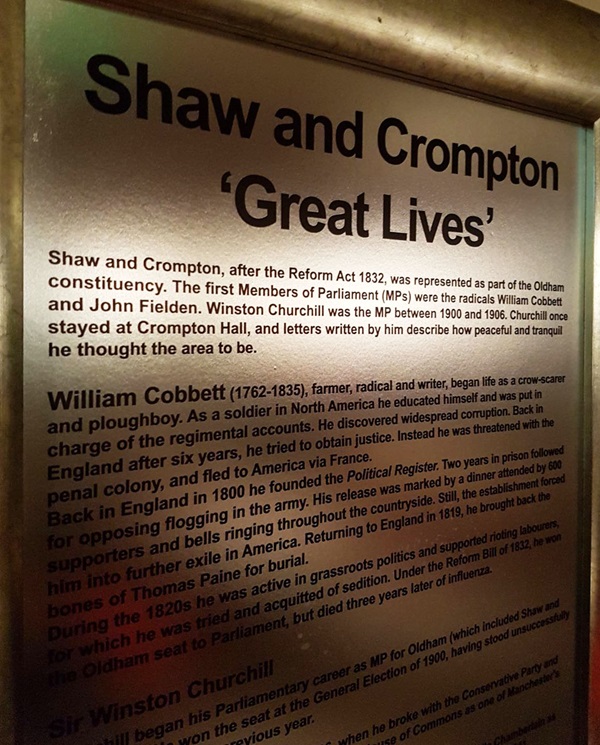
The text reads: Shaw and Crompton, after the Reform Act 1832, was represented as part of the Oldham constituency. The first Members of Parliament (MPs) were the radicals William Cobbett and John Fielden. Winston Churchill was the MP between 1900 and 1906. Churchill once stayed at Crompton Hall, and letters written by him describe how peaceful and tranquil he thought the area to be.
William Cobbett
William Cobbett (1762-1835), farmer, radical and writer, began life as a crow-scarer and ploughboy. As a soldier in North America he educated himself and was put in charge of the regimental accounts. He discovered widespread corruption. Back in England after six years, he tried to obtain justice. Instead he was threatened with the penal colony, and fled to America via France. Back in England in 1800 he founded the Political Register. Two years in prison followed for opposing flogging in the army. His release was marked by a dinner attended by 600 supporters and bells ringing throughout the countryside. Still, the establishment forced him into further exile in America. Returning to England in 1819, he brought back the bones of Thomas Paine for burial. During the 1820s he was active in grassroots politics and supported rioting labourers, for which he was tried and acquitted of sedition. Under the Reform Bill of 1832, he won the Oldham seat to Parliament, but died three years later of influenza.
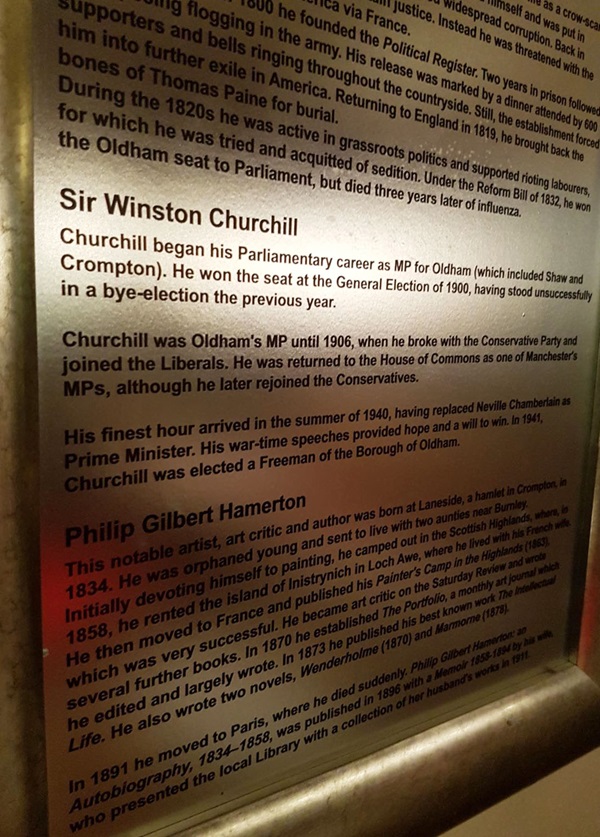
The text reads: Winston Churchill
Churchill began his Parliamentary career as MP for Oldham (which included Shaw and Crompton). He won the seat at the general election of 1900, having stood unsuccessfully in a bye-election the previous year. Churchill was Oldham’s MP until 1906, when he broke with the Conservative Party and joined the Liberals. He was returned to the House of Commons as one of Manchester’s MPs, although he later re-joined the Conservatives. His finest hour arrived in the summer of 1940, having replaced Neville Chamberlain as prime minister. His war-time speeches provided hope and a will to win. In 1941, Churchill was elected a freeman of the Borough of Oldham.
Philip Gilbert Hamerton
This notable artist, art critic and author was born at Laneside, a hamlet in Crompton, in 1834. He was orphaned young and sent to live with two aunties near Burnley. Initially devoting himself to painting, he camped out in the Scottish Highlands, where in 1858, he rented the island of Inistrynich in Loch Awe, where he lived with his French wife. He then moved to France and published his Painter’s Camp in the Highlands (1863), which was very successful. He became art critic on the Saturday Review and wrote several further books. In 1870 he established The Portfolio, a monthly art journal which he edited and largely wrote. In 1870 he published his best known work The Intellectual Life. He also wrote two novels, Wenderholme (1870) and Marmone (1878). In 1891 he moved to Paris, where he died suddenly. Philip Gilbert Hamerton: an Autobiography, 1834-58, was published in 1896 with a Memoir 1858-94 by his wife, who presented the local library with a collection of her husband’s works in 1911.
A print of Rochdale Road from Four Lane Ends.
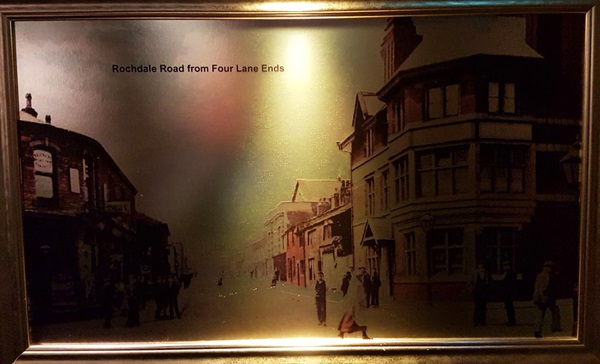
A photograph of Four Lane Ends looking towards this site and Milnrow Road from Market Street.
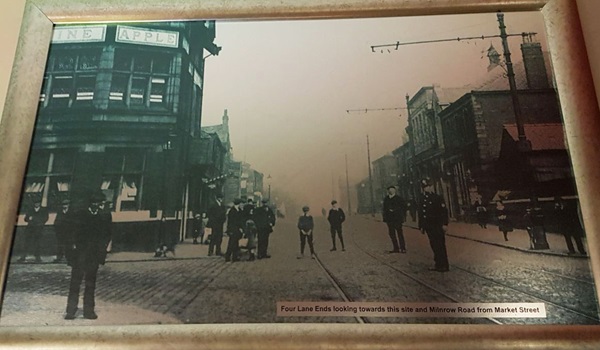
A sculpture entitled Loom VI, by Richard ‘arbarus’ Dawson. This was created using treadle sewing machine parts, scrap steel, cold cast aluminium, timber.
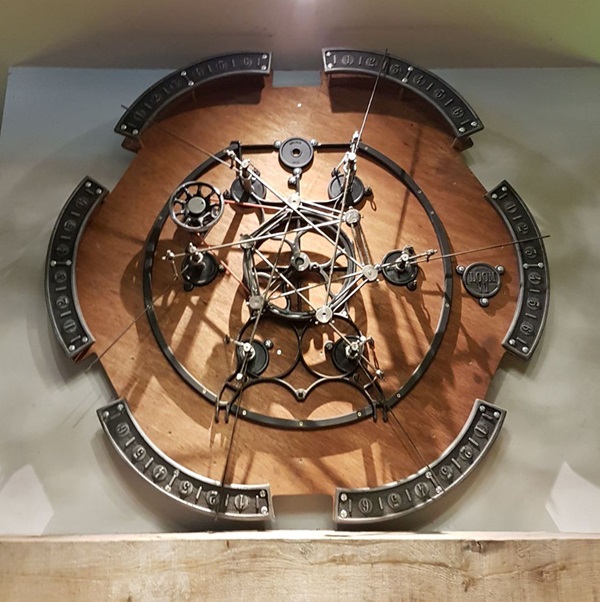
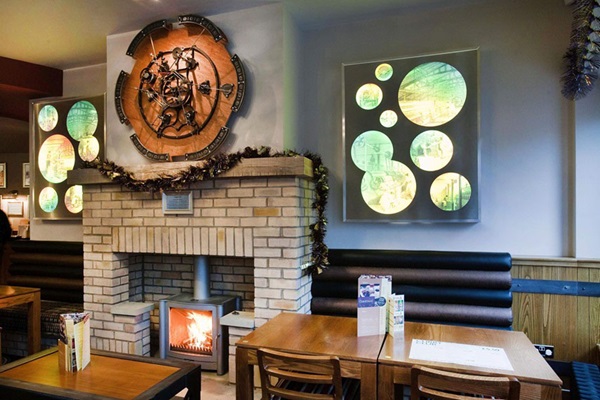
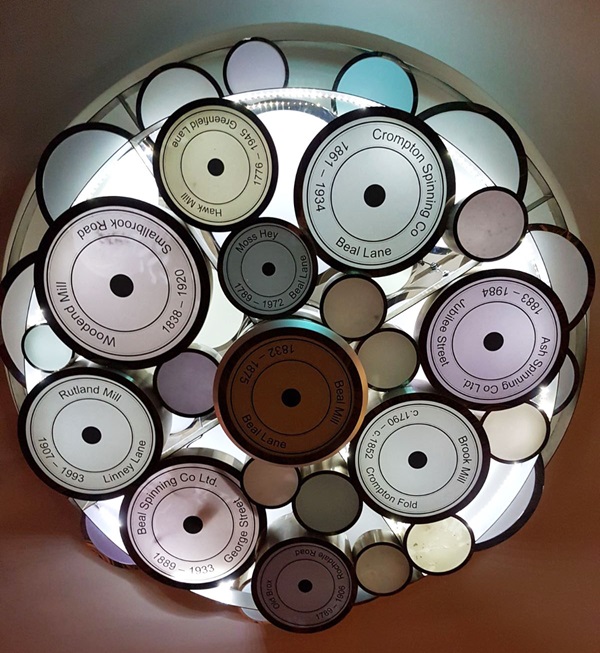
Artist, designer-maker Richard ‘arbarus’ Dawson creates kinetic sculptures from scrap and reclaimed materials combining technical design and craft aesthetics.
His studio workshop is in the Woodend Mill, Mossley, last of the Three-Counties cotton mills. He is fascinated and inspired by the past industry of the area and especially the weaving machinery that powered the industrial revolution.
External photograph of the building – main entrance.
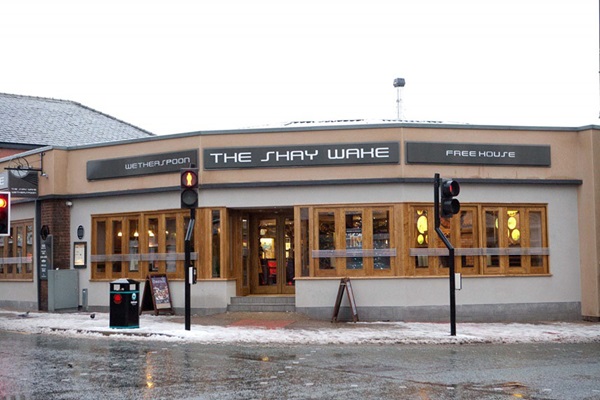
If you have information on the history of this pub, then we’d like you to share it with us. Please e-mail all information to: pubhistories@jdwetherspoon.co.uk